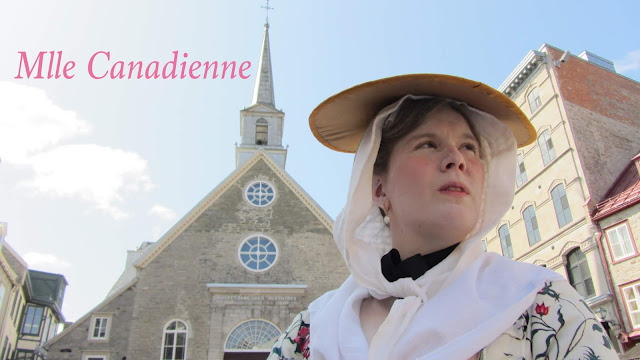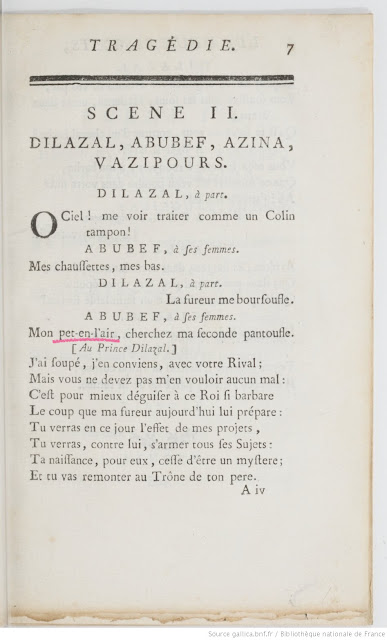Hello,
I promised to make an article about woman hairdressing of the 18th century into the last photoshoot article I made (in French only): Séance photo de août 2019. So here it is!
The knowledge I have for 18th century hairdressing and caring comes from three sources.
Mme Evelyne Bouchard initiated me when I was part of her group: In Memoriam. I read also the American Duchess's book: The American Duchess guide to 18th century beauty. I read the website of Mr. Alain Ducher. He got the title of ''meilleur ouvrier de France'' for his Manuel de coiffures historiques, where he recreates hairstyles form all historical period.
I also read the Toilette de Flore (in original French) of 1777 written by M. Pierre Joseph Buc'hoz about powders pomades and perfumes.
The powder is amidon base. It can be wheat, rice, potato or other. The finer and the whiter, happier the consumer. To the starch can be add ashes, crushed shells or bones, odorant roots and perfume. The powder is the main care product to clean the hair. It can be use alone for the poorer of with pomatums for the wealthier. According to Mr. Alain Ducher, woman were also ''leaching'' their hair but I haven't found it somewhere else. He says that it is not the washing process itself that scared people but the idea of having a wet head for long time, almost synonym to death during winter. So ''leaching''the hair was done only in summer.
The pomade, based with mutton and or pork fat, deeply washed and infused with perfume makes the hair more malleable. It fixes the hairstyle.
The hairstyle made into the following picture is the fashion of the 1750's period.
Most of my beauty accessories come from The Lady behind LBCC Historical. (Orange water, white makeup, Rouge liquid, hair pomade, Hair powder)
I am testing the pomades and hair powder of my friend Nick Barber. His main domain is blades, razors, axes and all sorts of sharp things.
The hairstyle made into the following picture is the fashion of the 1750's period.
Most of my beauty accessories come from The Lady behind LBCC Historical. (Orange water, white makeup, Rouge liquid, hair pomade, Hair powder)
I am testing the pomades and hair powder of my friend Nick Barber. His main domain is blades, razors, axes and all sorts of sharp things.
When we made the picture, my hair was living the 18th century life for 24 hours. They were pomaded and powdered for that time period.
 |
| Hygiene, hair care and makeup things. |
First step
Untangle the hair with combs. It removes the old powder from the hair.
Second step
 |
| A horn comb freshly used |
Second step
Put pomade and powder into the hair. During the photoshoot, my hair was full of pomadums and lost powder during brushing. I just added powder.
Third step
Make the separations of the hair. It is for this step that I would need a lady to help me (Cathrine Davis you miss me, Virginia is far...)The front of the hair is separated with a line that comes from one ear to the other. This separation is divided in half in the middle of the front. Most of portraits of the period shows littles frills of hair or little rolls of hair. My hair is too long to make frills and I miss talent and patience to make the feminine small rolls on my head so the front is boring according to the period criteria. My hair is gathered into a bun that is on the front top of the head. According to 2019 criteria, it is really in the front area and it feels weird the first times. (my older pictures shows that I was not making the bun on the front enough and it makes the hairstyle a little off when compared to portraits.
For the back of my hair, I was inspired by the back of the bust of Mme de Pompadour. It is three braids raised in the bun direction.
 |
| Sculpture of Mme de Pompadour by Jean-Baptiste Pigalle 1748-1751 Exposed at the Metmuseum de New York |
 |
| Make the separation is difficult |
Braid the back hair.
 |
| I won't thrust Joseph again to tell me if the separation is straight or not. He said is was straight. Men and fashion... |
 |
| Finishing the third braid |
Fifth step
Make the flat bun in a way that it will be hidden by the cap. Raise the braids unto it.
 |
| Flat bun is appropriate for the period from 1730 to 1760, more or less. Before, the main hairstyle is ''à la Fontanges'', after begins the reign of the ''pouf'' of Marie-Antoinette. |
 |
| Les tresses sont toutes remontées |
Sixth step étape
If wanted, add another layer of powder.
 |
| The ''houpette'' is practical to layer powder to the hair. It can be made in swan feather but this one is made in long hair sheep skin. |
 |
| Make a uniform layer is not as easy as it seam. |
Last hairdressing step
Hide the bun with the cap.
 |
| The hairstyle is done! |
Now is time to talk about historical makeup
The foundation, was named ''pommade pour le teint'', I have not look for the original English name. It is that pommade that was sometime using lead into it. ''Blanc de céruse'' or lead oxyde, had the reputation to be whiter than white and now is known to be harmful for the skin. According to American Duchess, they did know it too back then. (It is the same as the use of the cigarette today, it is known to be harmful but people keep using it). There are recipes that is not using lead and they are the reproduction sold today.
Red comes into a liquid form and simply state that ''red imitates the natural'' The same product is use for the lips and the cheeks. The Liquid Rouge I have is drying my lips, I should invest into a hydrating historical lib balm.
Burned cloves are used to darken the eyebrows.
A thin layer of powder ends the makeup and give to the skin a velvet peach skin aspect.
Many people talks about blue to fake veins but I have not found it into historical sources yet.
Mouches, those little piece of black silk can be add to accentuate the paleness of the skin. A dark ribbon around the neck does that effect too.
The first time I tried to make an historical makeup, I looked like a ghost with two caterpillar instead of eyebrows. To know how to dose is a difficult art...
 |
| I have not found the good tools to spread the white make up. The texture of it is rather thick. |
 |
| It is not the most successful makeup I have made... |
 |
| A good view of the hairstyle. |
 |
| With time the makeup tends to fade away, giving a more natural look. |
That ends my article about 18th century hairstyle and makeup.
I want to officially thank my good friend Joseph Gagné, historian and author of the blog Curious New France. He was the photographer that morning. Without Joseph, my separations of hair would have been more wavelike and I would not have been able to make this article.
I hope you liked this article!
Mlle Canadienne


























































